I recently bought cannabis seeds, which are now perfectly legal in Germany.
I looked at strains and genetics and the ignorance of the cannabis crowd is annoying me.
There are some ridiculous myths and misconceptions.
In the following, I'll try to exlain, what P, F1, F2, hybrids, phenotypes, genotypes are and how feminised seeds (XX chromosomes) work.
This was part of the German school curriculum and I learned this stuff in 8th grade.
Yet, nowhere - from the seed ctatalogues to canna-youtube - nobody gets it right.
Mendel
Apparently, this dude Mendel found all this out as late as 1865.
My 2 cents: man have domesticated plants and animals for a long time and I am sure selective breeding was invented many times...
Mendel bred peas and by pure observation discovered these priciples.
In the following, I'll try to explain in my own words (and pictures), how it works.
Intermediary Inheritance
I don't even know if the term 'intermediary' is correct. Googling doesn't work all that well (in English).
Instead of peas, I will use flowers to explain.
Let's say: Mendel had 2 flowers of the same species, but in different color.
These are the parents, or the parential generation in the following called P.

One is red, one is yellow.
They come from a variety (strain) that breeds true; the red flowers will always have red offspring, the yellow flowers will always have yellow offspring.
Let's assume, Mendel tried this a few times:
He took 2 red parents (P), cross-pollinated them, harvested the seeds, grew them to flower and received red flowers again.
These children of a P crossing, we will call 'F' for filial generation.
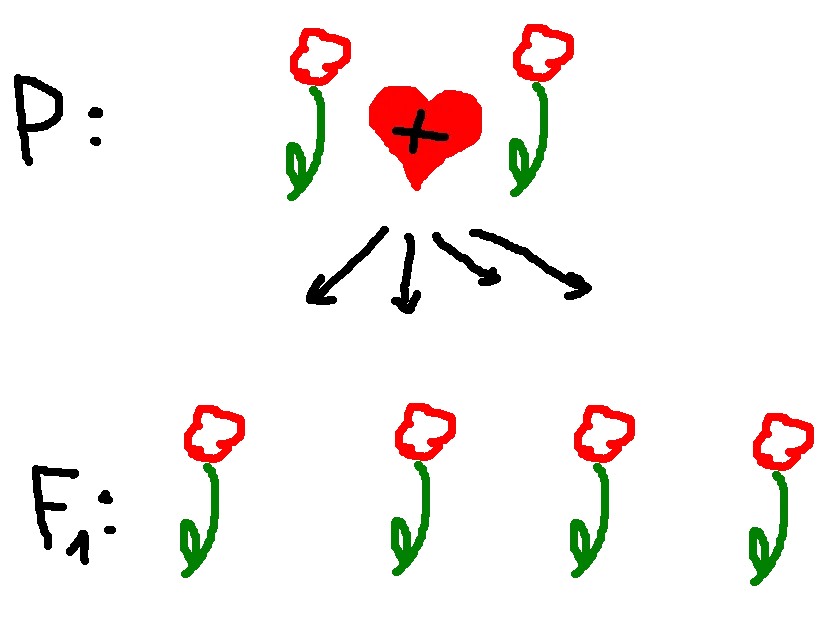
If you took these seeds of the first filial generation (F1) and bred them again with each other and create a second filial generation (F2), you would receive the same result: red flowers.
If the seeds breed true like that, we will call them homozygous.
Homozygous vs Heterozygous
Mendel took a homozygous red flower and cross-pollinated it with a homozygous yellow flower.
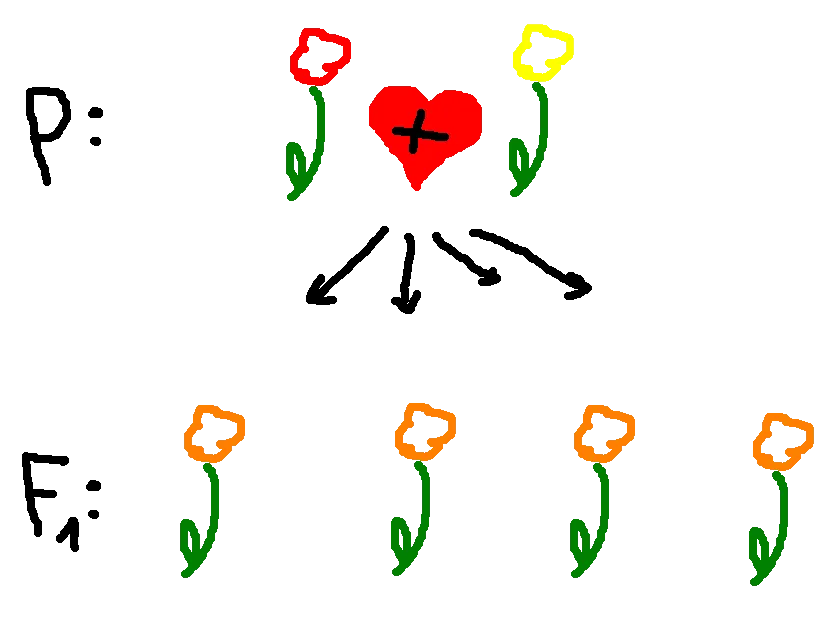
All offspring was orange.
I took orange as the middle between red and yellow.
If a trait expresses itself and inherits like that from the parents (P) to the children (F), where the mix of two traits meets in the middle, we call that intermediary inheritance.
There is a different type of inheritance, which I will get to later.
Eureka
Mendel took two flowers of that orange F1 generation and bred it again with each other, creating a second filial generation (F2).
This is where it gets interesting. This is where Mendel's accomplishment lies.
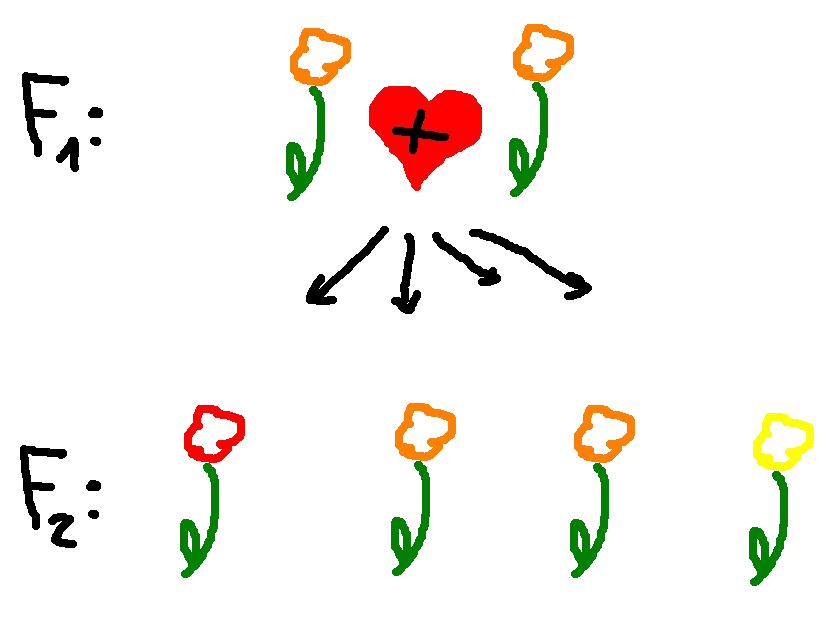
Mendel observed that the offspring of a true F1 (under intermediary inheritance) will display the traits of the P generation as well as the F1 generation under very specific distibution.
In our case this means:
25% red, 50% orange, 25% yellow.
Mendel observed this oddly specific distribution and came to the conclusion, that every genetic trait must somehow be present in the plant twice.
Let's say all genetic information comes in pairs.
A single information we call an allele.
During pollination, the child gets one allele from each parent and ends up with a full set of two complimentary alleles again.
In case of the red flower, it has two alleles for 'red' and so the child always inherits one allele 'red'. Same for 'yellow'.
There are 4 possible combinations, but they always end up 'red', 'yellow'.
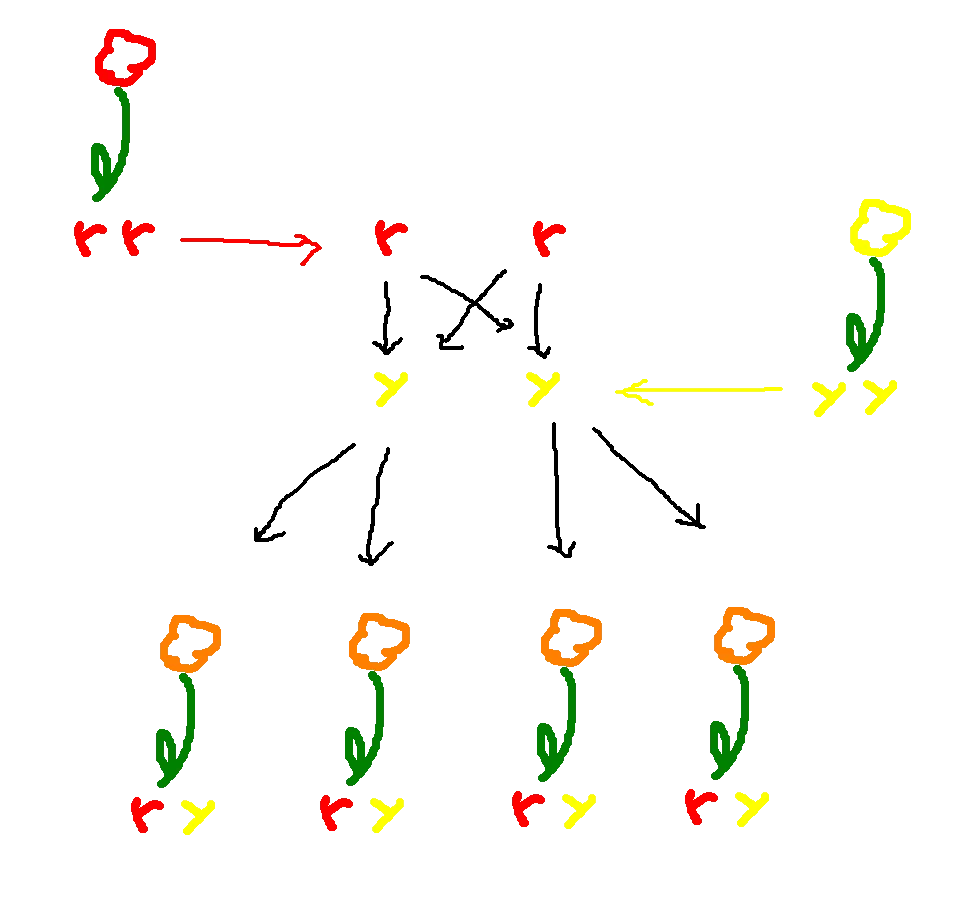
In case of breeding one F1 with another, we get Mendel's distribution.
A parent can provide either a 'red' or a 'yelllow' allele, each.
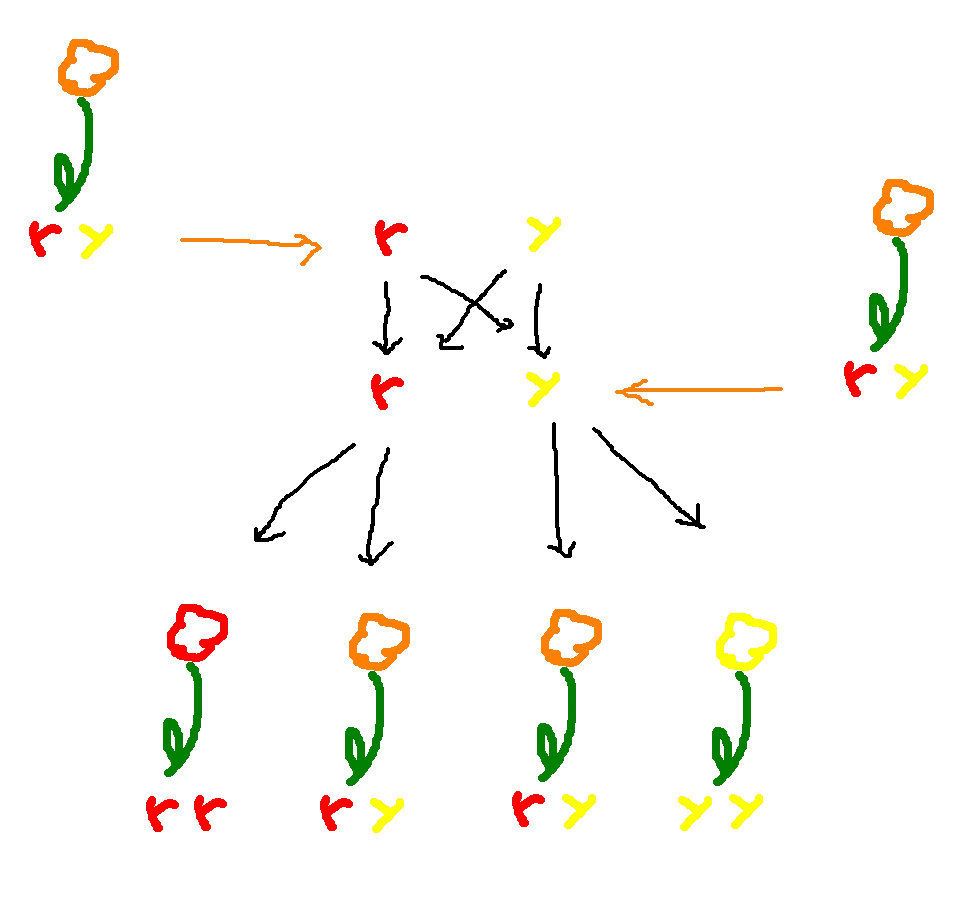
Mendel assumed this, because it was the most plausible explanation for what he observed. Today we got better technology and could observe that his conclusions are basically true. I am sure you have somwhere seen the double-helix DNA illustration...
Phenotype vs Genotype
or
Intermediary vs Dominant/Recessive
In case of red and yellow, I assumed an intermediary type of inheritance.
There is another type.
Let's assume 'blue' flowers was a dominant trait.
If there is a 'blue' allele, it dominates over 'red' - the 'red' allele gets ignored.
If a homozigous 'blue' flower pollinates a homozigoues 'red' flower (P), their offspring (F1) will have the genetic information 'blue' and 'red'. We call that the genotype.
Since the 'blue' trait is dominant, all flowers express 'blue' flowers, though. We call that the phenotype.

This means a plant can express a certain trait, but have 'hidden' information for another.
This will not matter during the plant's life, but it can pass on this recessive trait to further generations.
In our case of the imaginary flowers, this means two blue flowers (F1) have a 25% chance of having a red child (F2).
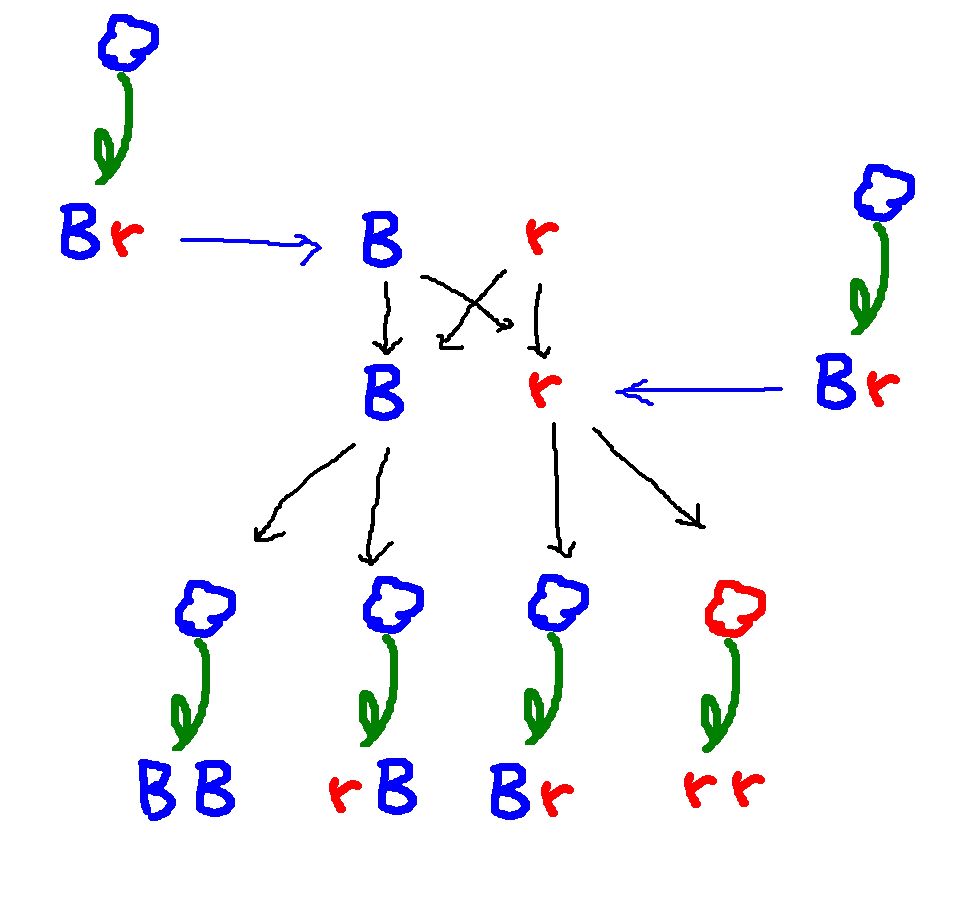
Final Additions
- In observed nature, things are not as simple as 'red' and 'yellow'.
Things are far more complicated; Genes work in sets, certain genetics need triggers to express, during every interbreeding random mutations can occur, mitochondrial (RNA) that gets passed on only by the mother, there are things like epigenetics, etc... - To stabilize a genetic trait in a strain, you need to first crossbreed the targeted trait into your genetic and then selectively breed again with a parent (P) in basically an incest geneline.
Incest over generations leads to bad genetics - a population needs variety, otherwise problems can occur.
Stabilizing a trait and creating homozygous seeds (true P) is a huge challenge and needs many generations and selection. - DNA is 'organized' in sets. These are called chromosomes. In species that have male and female, gender gets determined by the Y and X chromosomes, respectively.
Females have two X chromosomes. Males have X and Y.
In 'feminized' seeds -this is a thing with cannabis- there are only X chromosomes.
This gets achieved by forcing a female plant to express male flowers and pollinate (itself?). - F1 seeds are 'special'. First of all, they are all homogenous in genotype and phenotype. But also: being a fresh crossbreed of two incest lines, makes them unusually strong and robust. Outside of the cannabis bubble, these are called hybrids. Hybrids can have high yields and exceed their parents.
A lot (most?) of commercial field crop is grown from F1 seeds. - F2 seeds are generally not desirable. They are a 'mixed bag' (quite literally) and can express all different traits of their parents and grandparents in an unpredictable (wild) mix.
Cannabis Specific
I am not sure, what seedbanks actually provide (F1 or homozygous). Or their product descriptions are weird.
With seedbanks for regular vegetables it's 50/50 - some provide good descriptions and I found providers for homozygous seeds (heirloom).
I also don't quite understand how people claim hermaphrodites (in cannabis this usually refers to the undesirable female plant that expresses male genetics and risks pollinating your cannabis flowers) were a genetic problem, generally; All 'feminized' seeds are the offspring of hermaphrodites...
I understand that for a female to express male flowers is an undesirable trait in cannabis strains. Forcing a plant to do that (ususally with collodial silver), however, should have no direct influence on the genome. Likewise, a random male flower on a plant could be from a whole host of factors and does not have to be genetically hardwired.
I hear that genetic degredation from incest will lead to a genetic disposition to go hermi. If I am correct and feminized seeds are from (self-pollination even?) inbred lines, then wouldn't 'feminized' seeds have a higher tendency to do it as well?
I think the cannabis scene is driven by marketing.
Good seeds are a thing, but if the people involved in it almost without fail can't even explain Mendel's rules without fucking up completely, I have doubts.
I mean, nobody even uses the word 'phenotype' correctly.